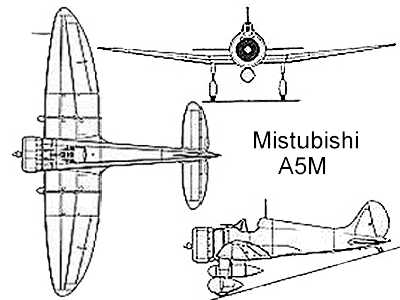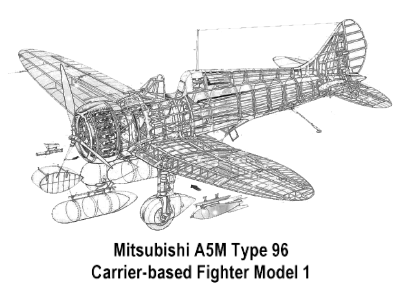The Mitsubishi A5M, Japanese Navy designation 'Type 96 Carrier-based Fighter Model 1' was a Japanese carrier-based fighter aircraft. It was the world's first monoplane shipboard fighter and the predessor of the A6M 'Zero'. The Allied reporting name was 'Claude'.
Development
The Imperial Japanese Navy delivered a new fighter specification in 1934 calling for an impressive aircraft system capable of 220 miles-per-hour top speed with an excellent climb-rate (interestingly the specification did not include a requirement for ship-borne operations). Though the Mitsubishi and Nakajima firms both produced designs, it was the Mitsubishi firm that got approval to further their development. First flight of the first prototype (this powered by a Nakajima Kotobuki 5 series radial piston engine of 600 horsepower) was on February 4th, 1935 and sported inverted gull wings which posed some handling issues. The second prototype, featuring a new conventional wing design, became the production A5M after flight testing exceeded all specification expectations. Further development led to the A5M4, modernized with the addition of an enclosed cockpit but found little favor among Navy aviators. A 35-gallon drop tank was added for improved ranges and this production series eventually saw use of the Nakajima Kotobuki 41 KAI series 9-cylinder radial piston engine. The engine was rated at 785 horsepower and allowed for speeds of up to 273 miles per hour. All had fixed, non-retractable undercarriage with (except for the trainers) wheel spats.
Back to Top
In Service
The first A5Ms entered service early in 1937, replacing the Nakajima A2N and Nakajima A4N. The aircraft arrived just in time to take part in the Second China-Japanese War, and made its large scale debut on 19 September 1937, when eighteen A5Ms clashed with a larger Chinese force. The Japanese pilots claimed 26 victories for no losses, and although the claims were exaggerated there was no doubt that the A5M was superior to the Hawk IIIs and Boeing 281s in Chinese service. The A5M units were used to support the attacks on Nanking, Shanghai and Nanchang. During this period they began to clash with Soviet Polikarpov I-153 biplanes and I-16s monoplanes, with both sides claiming then and since to have had the better fighters. In general the two sides were fairly equally matched in early clashes, but the Japanese had the better of the fighting during 1938, and Soviet losses in China began to mount.
The A5M was actually responsible for the first monoplane-versus-monoplane air battles in history, this being between the Japanese and the Chinese in the 2nd Sino-Japanese War. A5M's squared off against American-made Boeing P-26 'Peashooters' in the ensuing action. The P-26's were of similar design with their open-air cockpits, radial piston engines and static faired-over undercarriages. Unfortunately for the P-26's and their Chinese airmen, the A5M proved superior and the A5Ms had little competition for the moment. Used by the Imperial Japanese Navy, the A5M served on through during 1941 the Navy began to pull out of China in preparation for the wider Pacific War that was expected to erupt at any time. At the same time the A6M 'Zero' began to enter service, and the A5M was rapidly phased out in front line units. The A5M was only involved in a few clashes with Allied aircraft. Aircraft from the carrier IJN Ryujo took part in the attack on Davao on Mindanao, and the invasion of the Dutch East Indies, before receiving A6Ms after returning to Japan in April 1942. Land based aircraft in the Marshall Islands clashed with attacking American aircraft from the USS Enterprise and USS Yorktown, on 1 February. Finally, on 7 May 1942 two A5Ms from the carrier IJN Shoho managed to get airborne before she was sunk by US torpedoes and bombs. Three victories were claimed by the two A5Ms and four A6Ms that launched, but with their carrier lost the aircraft had nowhere to go - one managed to land on a nearby island but the rest ditched.
Back to Top
Trainers
104 A5M aircraft were modified to accommodate a two-seater cockpit. This version, used for pilot training, was dubbed the A5M4-K. K version planes continued to be used for pilot training long after standard A5Ms left front-line service. After being relegated to trainers, then again were called back into action as 'kamikaze' planes in the final months of World War 2. Around 1,094 A5M's of all variants were built.
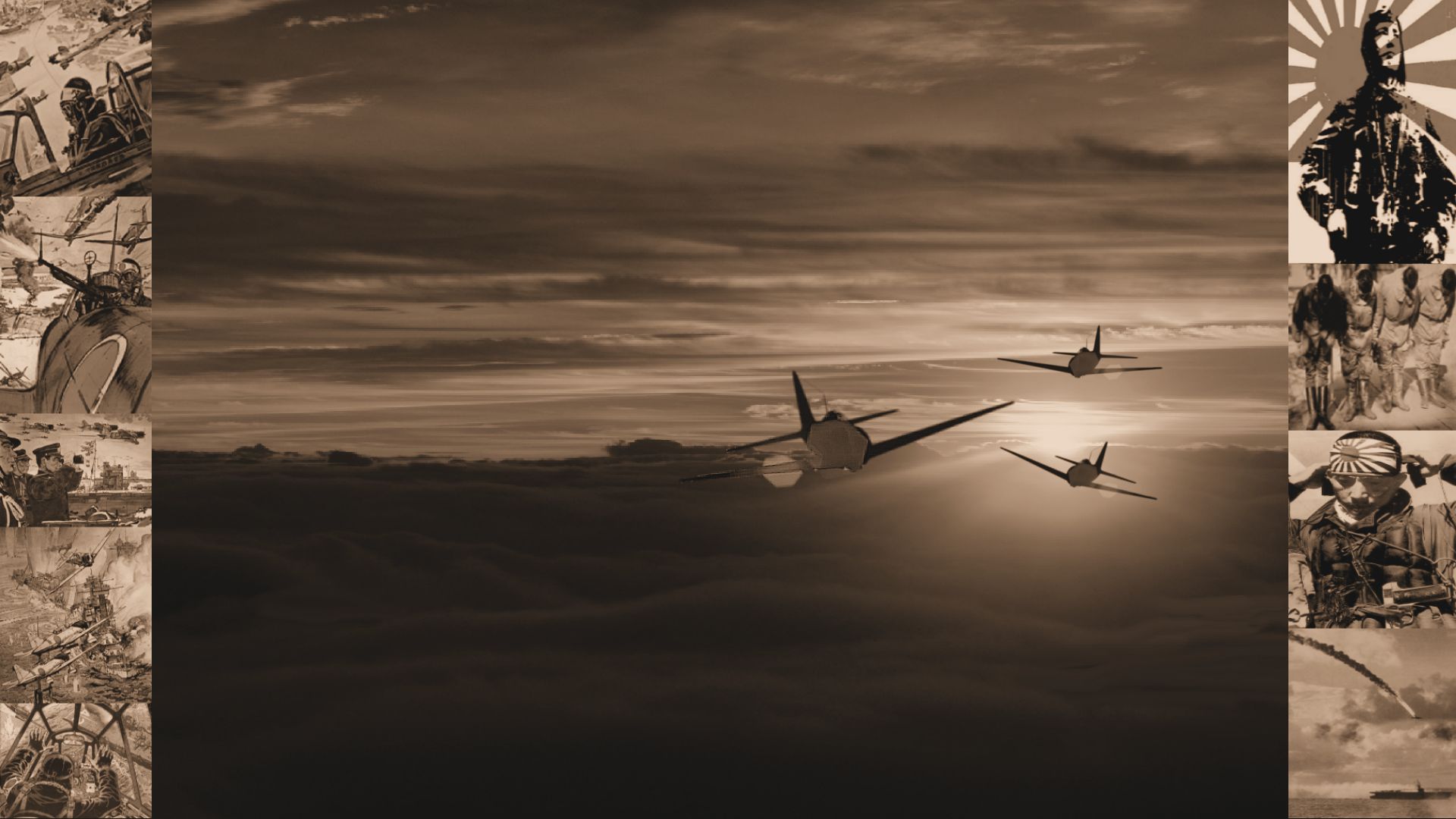


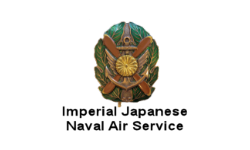
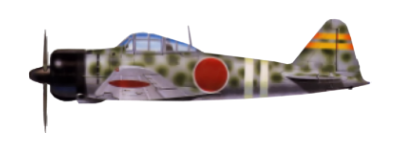 A6M Rei-sen
A6M Rei-sen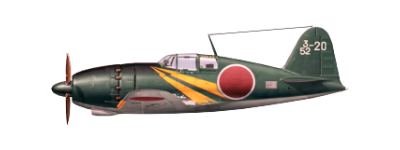 J2M Raiden
J2M Raiden N1K Shiden
N1K Shiden D3A
D3A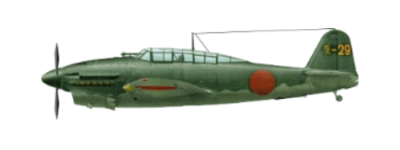 D4Y Suisei
D4Y Suisei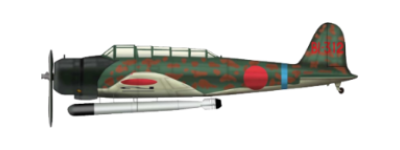 B5N
B5N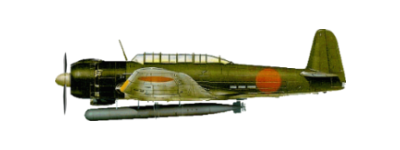 B6N Tenzan
B6N Tenzan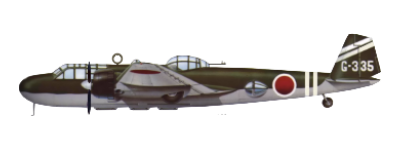 G3M
G3M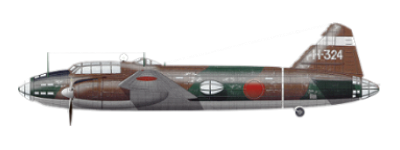 G4M
G4M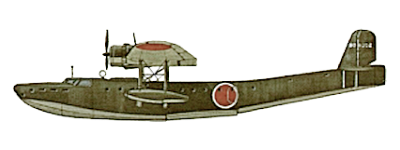 H6K
H6K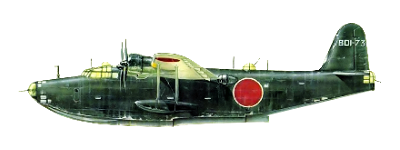 H8K
H8K
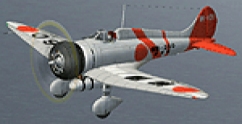

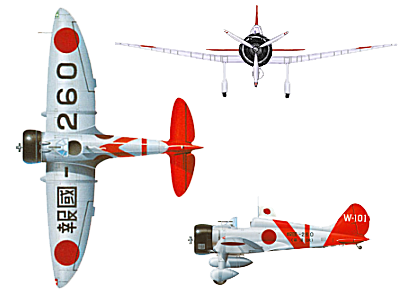
 Mitsubishi A5M
Mitsubishi A5M